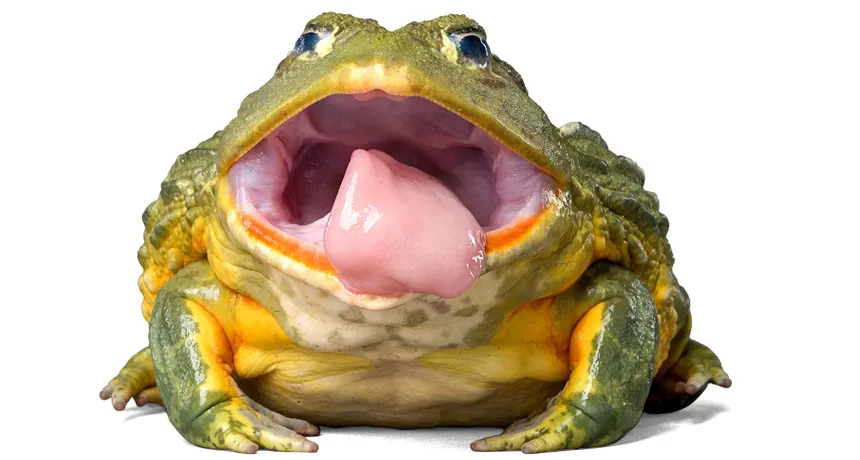
FLY TRAP A frog’s tongue strike demands subtle interplay between saliva and smooshable tissue.
LifetimeStock/shutterstock
Frogs’ remarkable power to tongue-grab prey — some as big as mice or as oddly shaped as tarantulas — stems from a combo of peculiar saliva and a supersquishy tongue.
The first detailed analysis of the stickiness of frog saliva shows that the fluid can shift rather abruptly from gooey to runny, says mechanical engineer Alexis Noel of Georgia Tech in Atlanta. Those quick changes come in handy during the various phases of a single tongue strike. And it all works because the tongue itself is so soft, Noel and colleagues report February 1 in Journal of the Royal Society Interface.
Internet videos of frogs feasting sparked Noel’s curiosity about their ability “to eat furry things, hairy things, slimy things,” she says, and to do so with speed and power. A frog tongue strikes five times more quickly than a human can blink.
But frog tongue tissue is so soft that none of the standard equipment on campus could measure it without special modifications. Noel eventually discovered that this tissue is as soft as a brain, which is itself naturally softer than a marshmallow.
When the tongue shoots out at, say, a fly, the soft frog tissue splats on impact, spreading and curling around the prey. This action “massively increases the contact area” of frog tissue that can stick to the fly, enhancing grip, Noel says. Then frog saliva intensifies the effect.
Frogs don’t have salivary glands spread around inside their mouths that drip saliva on their tongues. Instead, the tongue itself secretes the saliva. To see how sticky frog saliva might be, Noel spent several hours per sample scraping some 15 frog tongues to put together enough spit for a single test.
Noel and colleagues found that this saliva is what’s called a shear-thinning liquid, which grows thinner and easier to stir or smear around when force is applied. Smacking into a fly jolts saliva from its sticky phase — more viscous than honey, she says — into the more “liquidy” phase “flowing into all the small cracks” of the insect body. As the tongue returns to the mouth, the spit thickens again, intensifying the grip.
Story continues after video
STICK WITH IT Here’s what puts the grip in a frog’s high-speed strike: quick-change saliva and a tongue softer than a marshmallow. A. Noel, M. Mandica, D.L. Hu/Georgia Tech |
During that tongue jerk, acceleration can surge to 12 times the pull of Earth’s gravity. Still, in spite of the spit’s stickiness, the insect could be flung loose at this point, Noel calculated. But the soft stretchiness of the tongue, a natural bungee cord that retracts without too much of a jolt, prevents the loss, she says.
But once the fly is in the mouth, the tongue’s grip needs to loosen so the fly can slide down the gullet. “Frogs actually use their eyeballs while swallowing,” Noel says. Eyeballs sink from bulges to barely bumps, dipping inside the head and pushing food back toward the throat. The eyes’ impact jars the saliva into a runnier phase, easing its grip on the prey.
Frogs aren’t the only hunters that tongue-snatch their prey. Chameleon tongues also can be very sticky, says Pascal Damman, who studies the physics of soft matter (including chameleon tongues) at the University of Mons in Belgium. The new findings remind him of how chameleons catch prey using gooey mucus and a stretchy tongue, he says.





